Android P Features: What's New in Google's Next OS
In Android P, your phone will adjust to you, gain a cleaner user interface, and offer tools for digital wellness.
Android P is looking to take your digital life and make it more calm and organized. At the Google I/O 2018 Keynote event today (May 8), we saw how Google's adding make your phone adapt to you, cleaning up its user interface and offering you tools so smartphone addicts can disconnect.
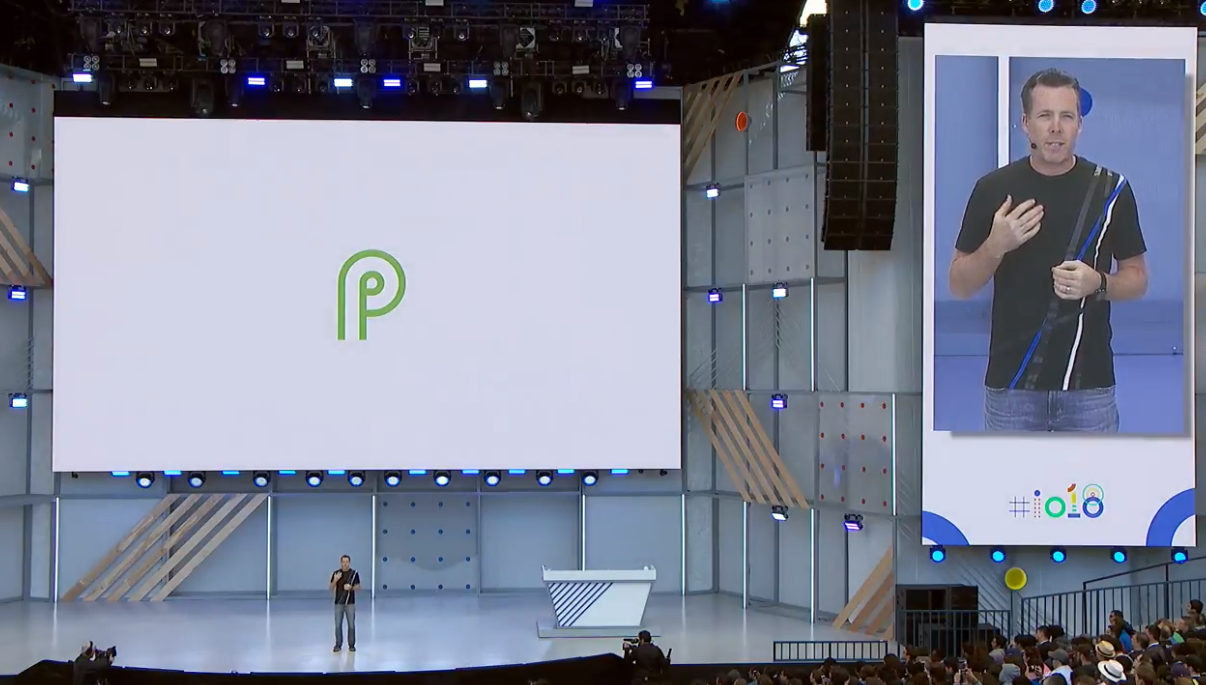
The Android P Beta is now available to download on Google's Pixel devices, as well as select flagship devices from Essential, Nokia, OnePlus, Sony and other vendors. That's a change from past Android updates when betas were restricted to Google's Pixel and Nexus devices.
Here’s what you can expect if you put Android P on your phone.
Design: Android cleans up nicely
While we heard rumor of the iPhone X's notch being formalized in Android, Google spent time at I/O to show how it's cleaning up Android's look.

First of all, the Google search bar is moving from the top of the screen to the bottom, so it's within reach, and you're not stretching your fingers. Google's also slimmed down the home button, and added new navigational gestures.
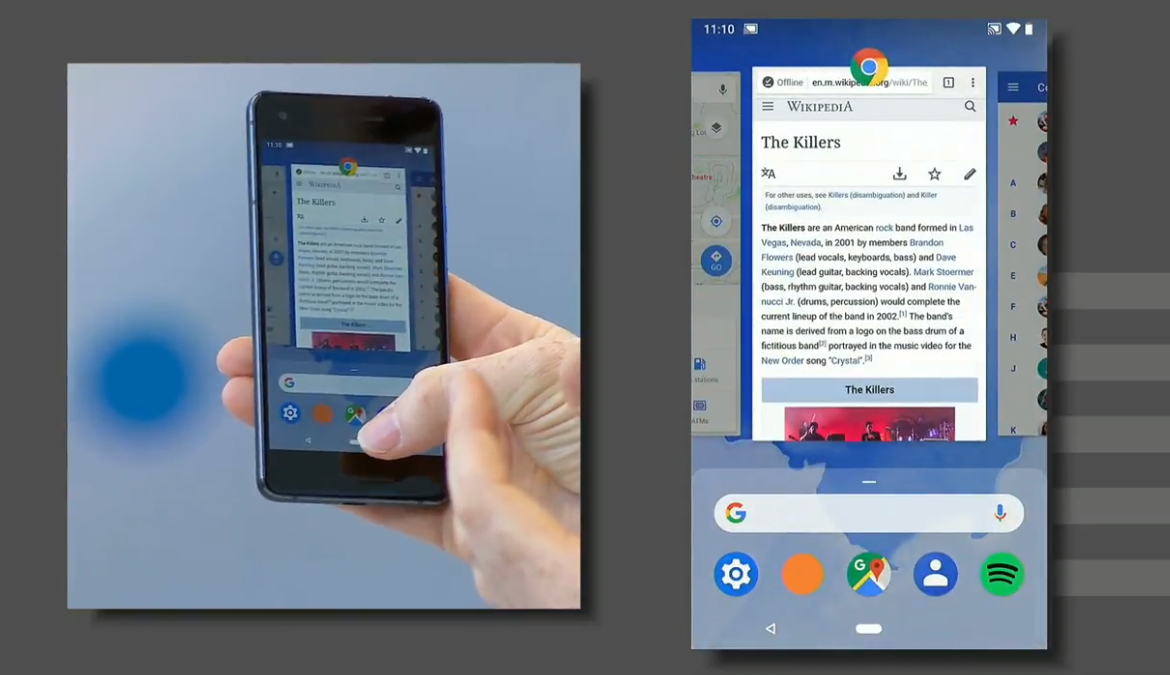
Now, if you slide up from the home button on the bottom of the screen, you'll see all of your app icons. Sliding your home button to the left opens up multitasking views, and you'll be able to perform quick actions from this view, such as opening Spotify to listen to music from band you're reading about in Chrome.
Android's also getting App Actions, buttons for actions based around your habits, when Android can guess it knows what you want to do next.
Sign up to get the BEST of Tom's Guide direct to your inbox.
Get instant access to breaking news, the hottest reviews, great deals and helpful tips.
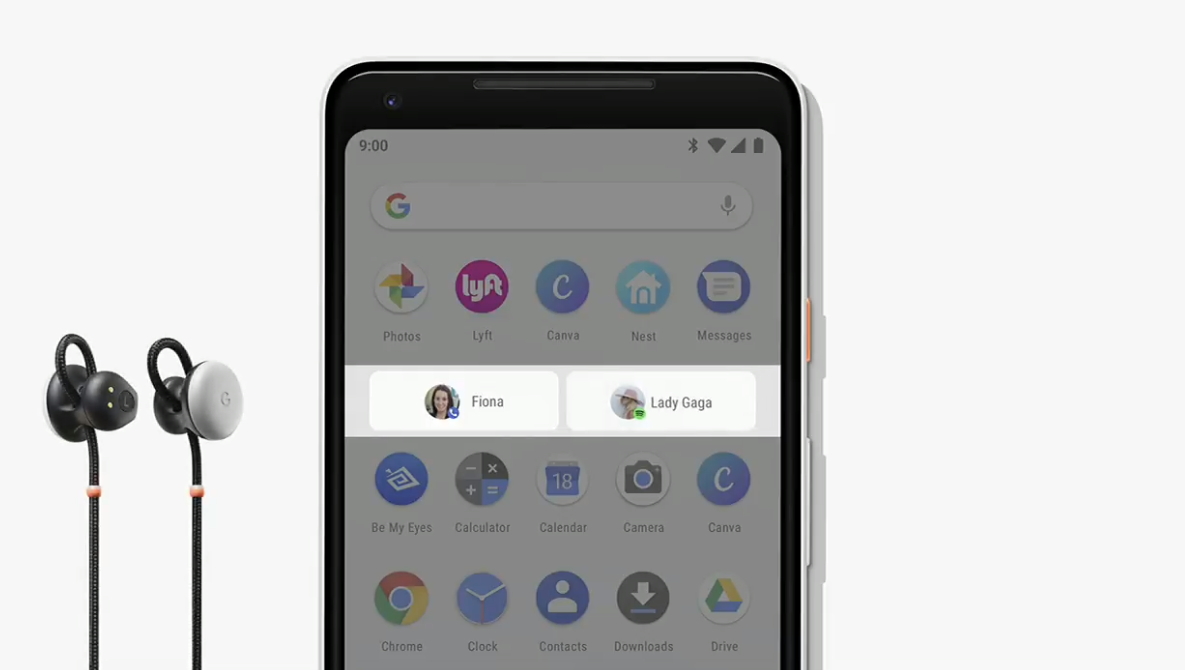
You'll also see more of the apps you love inside of Android, thanks to Slices, where parts of apps — such as the ride-booking buttons from Lyft — will show up in your search results. This way, you'll finish what you want to do faster.
Also, the volume buttons on Android phones will now default to adjusting the media volume settings, and not changing your notification sounds. This earned a large round of applause.
Adaptive Android: Smarter Battery Use, Display Dimming
Google touted on-device machine learning as one of its major weapons in learning what you do, to make your phone run more smoothly. The first of these features is Adaptive Battery, where your phone will learn what apps you use more often, and adjust how it uses energy appropriately. This resulted in a 30 percent reduction in CPU app wakeups which Google said lead to "an increase in battery life for many users", though it didn't specify by how much.
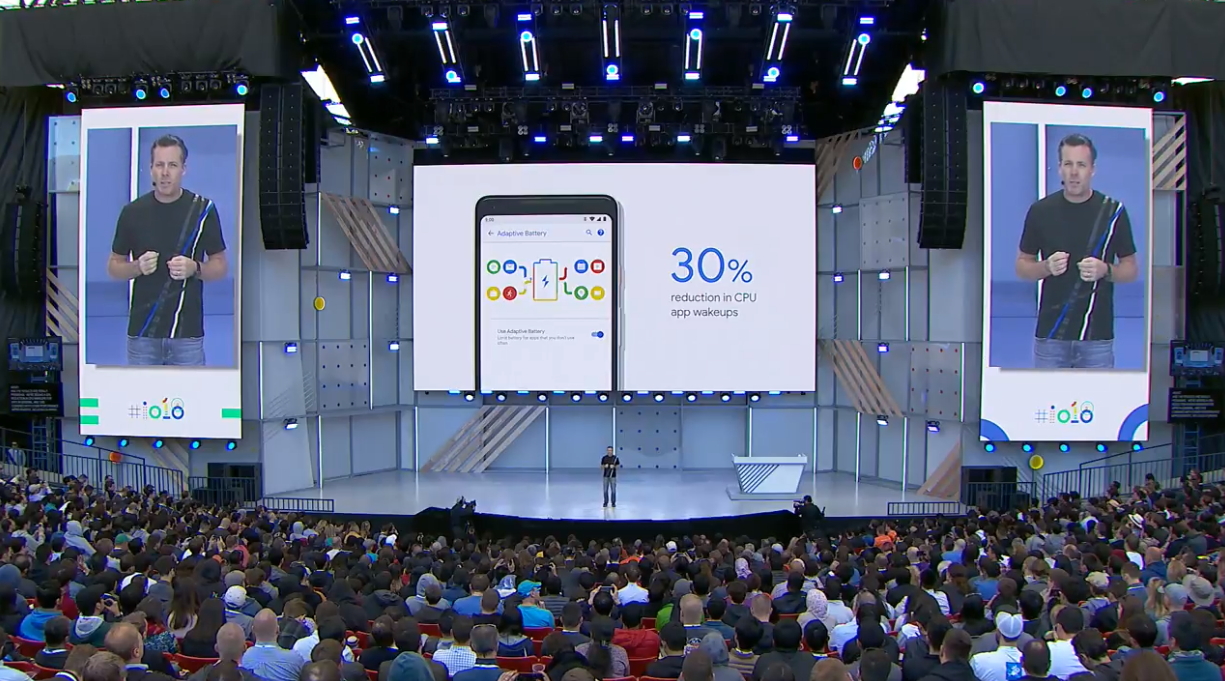
Its other major feature is Adaptive Brightness, where Android won't rely on just the ambient lighting around you to set the screen to the proper brightness. Google noted that automatic brightness settings often lead to users manually adjusting their screen brightness by hand, and this feature will let your phone learn your preferred brightness. This allowed half the users testing the feature to stop fidgeting with their phone's brightness.
In an effort to ease privacy concerns, Google repeatedly emphasized how the machine learning takes place on-device "keeping data private and out of the cloud."
MORE: Best Alexa Skills - Top 50 Cool and Useful Things Alexa Can Do
Wellness means rethinking our tech addiction
Wellness was a major theme for Google, which highlighted how easy it can be to get lost in our portable screens. The Dashboard is central to Google's analysis of how much you use your phone, and it will track how much you use your phone, how many times you unlock your phone, your Gmail habits and the hours of YouTube videos you consume.
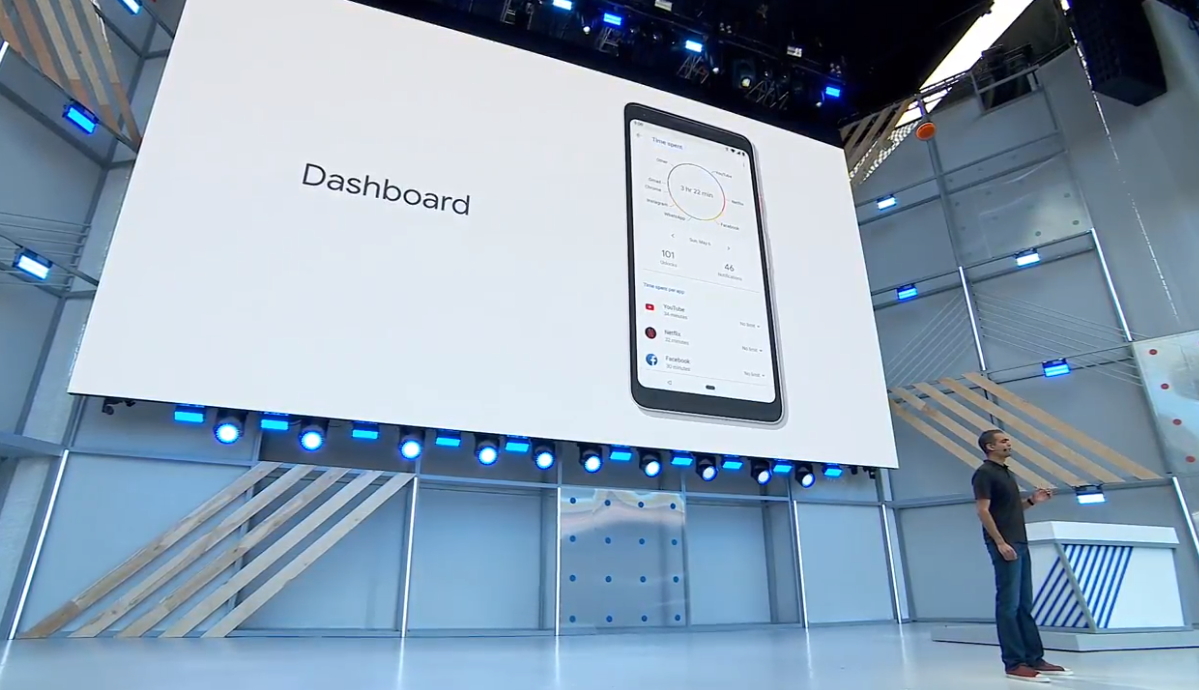
Putting down your phone at dinner can be a big problem, so Google's adding a Shush gesture that enables Do Not Disturb mode. How do you activate Shush, simply put your phone face-down on the table.
tAnd since Do Not Disturb mode will mute notifications, including calls, Android allows you to set Starred Contacts. This way, you can instruct your Android device to always send you notifications from the important persons in your life.
For all the apps you spend too much time on — for me, it's Twitter — you can set app-by-app usage limits. Android will nudge you when you're nearing those limits, and gray out the app icons when you've reached a limit. The apps should still work, so you're not shut out all together if something important happens.
No More Out-of-Date Apps
Google is cracking down on apps designed for previous generations of Android in the P developer build, The Verge noted. If an app doesn't use a recent SDK targeting Android 4.2 or later, users will see a pop-up alert when they try to install it. Google will also require new apps to target Android Oreo by November.
What's In a Name?
While Google outlined many — though not all — of P's features, it still hasn't told us what dessert-themed name the Android update will take. But that's not surprising: Google rarely reveals that information at its developers conference, saving the naming announcement for later in the summer, closer to the update's release date.
Rumored candidates for the official name include Popsicle, Pineapple Cake and many variations on Pie.
This article updates an earlier report on Android P with new information from Google I/O.

Henry is a managing editor at Tom’s Guide covering streaming media, laptops and all things Apple, reviewing devices and services for the past seven years. Prior to joining Tom's Guide, he reviewed software and hardware for TechRadar Pro, and interviewed artists for Patek Philippe International Magazine. He's also covered the wild world of professional wrestling for Cageside Seats, interviewing athletes and other industry veterans.
-
savickis.arturs Eh-mm, so basically what you saying is that Google will simply bring us three 'groundbreaking' features, two of whom (one that's been there in iOS for a long time already, and the other one that is simply retarded) is basically just ripped off from Apple OS? Wow, really innovative. :/Reply -
ccbmeyer Thanks for your great articles. I love reading them.Reply
However, this whole notification feature thing has been on my old Note 4 for a while and I don't even have OREO on it. Why is it being advertised as a new thing for P? -
asian93 The major update in the new Android P Preview is the smart replies features for the users. Android P Developer Preview 1 touts improvement in notification panel particularly for the messaging apps. The smart replies feature is borrowed from Google Allo app comes straight to the notification bar.Reply -
username1007.oc I think that the name of Android P will be Android Pop-Tart. Since the previous brands is named after famous brands such as KitKat, and OreoReply
